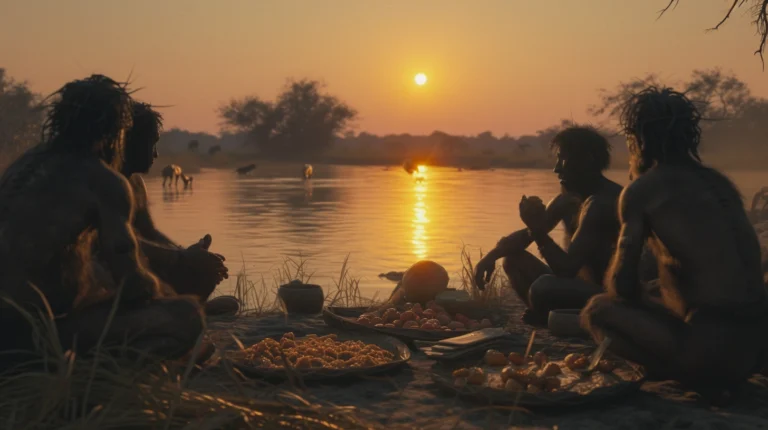When we delve into the question of what the first humans ate, we uncover fascinating insights into Homo habilis, an early member of our genus, Homo. Their dietary habits offer a window into the adaptability and technological ingenuity that characterized early human survival. This exploration is not just an academic curiosity but a guide to understanding how our ancestral diets can inform modern eating practices, emphasizing natural, unprocessed foods for optimal health. Let’s explore three key aspects of Homo habilis’s diet, integrating scientific findings with a perspective that champions the natural dietary philosophies of today.

1. Dietary Flexibility and Broad Subsistence Base
Homo habilis, thriving around 2.5 million years ago, exhibited remarkable dietary flexibility. Unlike their australopith predecessors, they did not confine themselves to a narrow range of foods. Evidence from dental studies suggests a shift towards consuming a variety of plant and animal resources. This dietary diversification included foods with different fracture properties, indicating the consumption of both hard and soft items, from fruits and nuts to meat. This adaptability was crucial for Homo habilis, allowing them to thrive in varying environments and suggesting a diet that was as opportunistic as it was varied (Ungar, 2012).
2. Introduction of Animal Products into the Diet
The incorporation of animal products marks a pivotal shift in early human diet evolution. With the advent of stone tool technology, Homo habilis began to scavenge and possibly hunt, accessing new sources of nutrients. Animal products provided essential calories, vitamins, and minerals not as readily available in plant foods. This period coincides with significant evolutionary developments, including bipedalism and increased brain size, underscoring the importance of nutrient-dense foods in human evolution. The balanced use of plant and animal sources reflects a nuanced approach to eating that prioritizes natural, unprocessed foods for their health benefits, aligning with modern nutritional philosophies that advocate for a diet rich in organic meats and plant-based foods used judiciously (Andrews & Johnson, 2019).


3. Technological Innovation and Food Processing
The use of stone tools by Homo habilis was a game-changer in food processing, enabling them to access a wider range of food sources. This technological innovation allowed for the exploitation of meat from scavenged carcasses and possibly hunted prey, highlighting an adaptive strategy that significantly broadened their dietary possibilities. Such adaptability not only facilitated survival but also shaped our evolutionary path. Today, this emphasis on natural, unprocessed foods, and the avoidance of modern processed foods and artificial ingredients, echoes the simplicity and directness of our ancestors’ dietary strategies. Cooking with organic butter instead of seed oils, and prioritizing spring water or water treated through reverse osmosis, are contemporary practices that resonate with this ancestral wisdom (Plummer, 2004).
In conclusion, the dietary habits of Homo habilis, characterized by flexibility, the inclusion of animal products, and the innovative use of technology, offer profound insights into the evolution of human diets. These early humans leveraged their environments and available technology to nourish themselves with a diverse array of foods. By reflecting on these ancestral eating habits, we’re reminded of the importance of consuming a diet that is as close to natural and unprocessed as possible. Embracing foods that our bodies are optimally designed to consume – such as organic meats, fruits, and selectively used plant-based foods – not only honors our evolutionary heritage but also supports optimal health in the modern world.
Understanding what the first humans ate helps us appreciate the significance of a diet grounded in natural, organic foods, free from the artificial influences that dominate much of today’s food landscape. This historical perspective, backed by science, reinforces the philosophy that the key to a healthy diet lies in mirroring the natural eating patterns shaped by millions of years of human evolution. To learn more about what early humans ate, read this blog here for a more detailed insight.